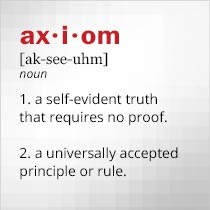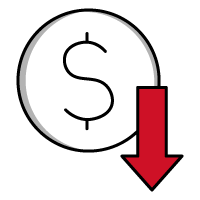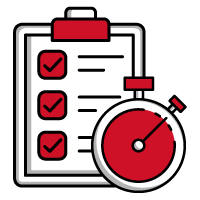Considerations In Choosing An Oscilloscope
January 21, 2016
 |
Oscilloscope Description
The oscilloscope, referred to as a “scope” going forward, is without a doubt the most versatile piece of test equipment on the engineer’s bench. No R&D or test bench is complete without one. In its most basic form, an oscilloscope displays voltage versus time with a calibrated display. The display takes the form of an XY graticule with calibrated vertical and horizontal divisions, known as a CRT. The feature that made the scope useful is the ability to trigger, or start a trace sweep, at precisely the same point in a repetitive waveform. This makes the trace stable and flicker free and easy to view. The primary characteristic of analog types is that there is a direct DC path from the input all the way to the deflection plates on the CRT display. One major advantage that analog scopes have is that the input impedance can be 1 Megohm. This value, together with 10 Meg ohm probes, allows for non-disruptive in-circuit probing. In choosing the capabilities of an oscilloscope for your needs a bit of history of the oscilloscope will add some perspective.
Oscilloscope History
The oscilloscope has been around in various forms since the 1930’s. As such the early types are referred to as “analog” versions since they came about before the “digital” revolution. They essentially evolved through the efforts of two major test equipment companies, Hewlett Packard and Tektronix. Analog scopes are quite advanced, but have limitations in the types of waveforms that they can display and the types of analysis that they can do. We will address the limitations of an analog oscilloscope later in this paper. When digital capabilities came onto the scene scope capabilities exploded leading to a new era of measurement and analysis. In choosing a scope for your needs you need to be aware of the limitations and capabilities of both analog and digital scopes.
Analog Oscilloscope Limitations
Analog scopes have been the backbone of in-circuit AC voltage measurement and visualization until the advent of digital types. In discussing the primary limitations of analog scopes a little math is necessary. Scopes are a time based measurement tool, but they display frequencies. The range of frequencies a scope can display is limited by the response time of the scope. The primary limitations have to do with analysis and measurement range. Secondarily analog scopes are not “documentation friendly”. In order to save a waveform you have to take a picture of the screen. No numerical analysis is available. In terms of time, analog scopes are only capable of measurements that correspond to a bandwidth of 1GHz at the high end and approximately 100 seconds at the low end. Because of these limits analog scopes cannot adequately display fast low repetition rate signals or frequencies above 1GHz. Analog scopes have extremely limited analysis capability. Typically they can only display time, frequency, or voltage with on screen cursors. Current can be displayed with the addition of special probes that measure current with clamp type attachments. Analog scopes do not lend themselves to remote control or data collection is yet another limitation. These limitations are important to keep in mind when choosing between an analog and digital scope. Generally speaking analog scopes are best suited for general bench top troubleshooting.
Intro to Digital Oscilloscopes
Digital scopes open up another whole world of measurement and analysis. Digital scopes operate on a completely different principle than analog scopes. They store samples of the waveform under test in memory as voltage values per time step. This introduces a different set of limitations on waveform acquisition. There are several important parameters that are associated with digital signal acquisition.
Digital Oscilloscope Limitations
Sample rate will determine the maximum frequency that can be acquired. Due to a principle of physics called the Nyquist Theorem the maximum frequency that can be resolved is one half of the maximum sample rate. Therefore if the sample rate is, for example, 1 GS/s or Giga Samples per second, then the maximum frequency that can be displayed is 500 MHz. The drawback is that you will not be able tell if the waveform is anything but a sine wave. In order to display more details of a waveform a higher sample rate is needed. If you are not careful you can display a false waveform due to an effect called “aliasing”. This will happen if your sample rate is less than twice the frequency being sampled. While digital scopes are extremely versatile, they do have limitations. Since the waveform is being sampled in discrete time, those values need to be stored in memory before being processed. At high sample rates this can require large amounts of memory. The amount of memory will be a major factor in the scopes capabilities and in the decision on which scope to use. More is always better. Another consideration of digital scopes is the signal interface. With the higher sampling rates specialized connectors are required and the input impedance is limited to 50 ohms. Standard BNC connectors simply do not have the bandwidth needed to support the higher sampling rates. SMA connectors are more typical of the faster scopes.
Digital Oscilloscope Capabilities
The versatility of digital scopes is quite large. The following covers some of the main features and capabilities.
Analysis and compatibility
Since the waveform is now in a numerical format, any number of analyses can be performed on it. Because the waveform is in numerical format the values can be imported into many mathematical software programs to perform analysis. Some of these are called Matlab, MathCAD, Maple, and Mathmatica among others. File formats like .SP, which are specific for RF analysis, are also available. These files can be imported into CAD programs.
Fourier
One of many such processing types is Fourier analysis. This type of numerical processing will produce a spectrum plot based on the time response of the waveform. Fourier analysis capability is available as an option on many modern digital scopes. With this feature you can perform basic frequency analysis; in some cases negate the need to purchase a costly purpose built spectrum analyzer.
Mixed signal
A feature of newer digital scopes is called mixed signal analysis. These scopes have an additional digital interface that in made to attach to data busses. Typically this interface is 16 bits wide allowing for triggering the scope on a specific digital event, greatly enhancing data bus troubleshooting and crosstalk problems.
Triggering capabilities
Special triggering formats are available for digital scopes. Triggering for all of the various serial interfaces is a huge advantage in troubleshooting serial communication issues. Video trigging capability including HDMI is available. Digital triggering available in conjunction with the digital interface is also available.
Glitch detection
Digital scopes are able to produce what are referred to as “eye” diagrams. These displays enable detection of glitches that are at a very low repetition rate compared to the higher frequency clock rate.
TDR
Due to the high speed and resolution of the input channels another feature of digital scopes is the ability to perform TDR measurements. This involves sending a pulse into the circuit under test and measuring the time for a return pulse to arrive. The time it takes for the round trip of the pulse is twice the distance to whatever caused the pulse to reflect. It is an essential tool for finding a discontinuity in a conductor. The faster the scope is, the finer the resolution in distance. The response of the trace before the reflection provides an indication of the impedance of the line being tested. Typically this will be 50 ohms.
In Conclusion
With modern scopes, measurement capabilities have vastly expanded from the early days of analog types. This includes the ability to document, analyze and visualize signals from DC up to 70 GHZ with the latest models. Major manufacturers of digital scopes include Tektronix, Teledyne/LeCroy, Rhode & Schwarz, and Keysight (formerly Agilent). Before you make a decision on what capabilities you require, evaluate the signal range you will be working with as well as the amplitude.
It should be noted that analog scopes are no longer produced by any of the major test equipment manufacturers, but they are still available from Axiom Test Equipment. Since 2005, Axiom Test Equipment has been providing a great array of both analog and digital oscilloscopes to cover all your testing needs. Both types of scopes are available for rent or sale depending on your requirements. Additionally we offer repair on most brands and types of oscilloscopes. Please visit our website at axiomtest.com/oscilloscopes for all of your oscilloscope needs.
Back to BLOG








